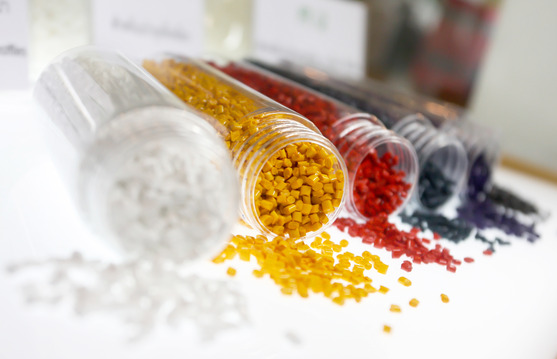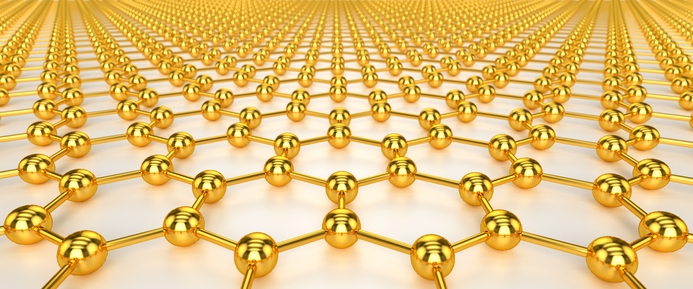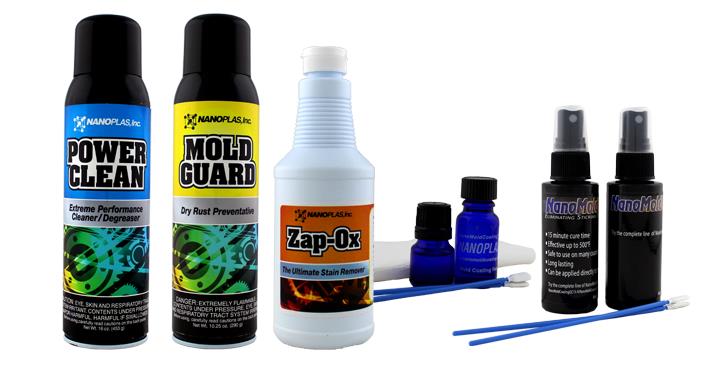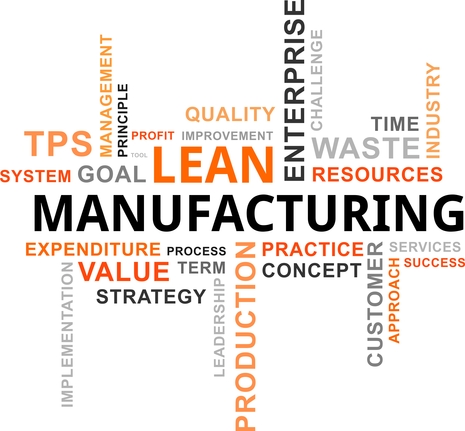
by Nanomold Coating | Oct 9, 2014 | Manufacturing, Recent Posts |
 Many complex and critical parts of machinery are difficult to make since they have challenging shapes and sizes. Furthermore, some injection molding companies do not always have the expertise, knowledge and equipment to make these complex parts. That’s why, when choosing your injection molder, it’s necessary to find out whether the molder has the specialization to mold complex parts using injection molding.
Many complex and critical parts of machinery are difficult to make since they have challenging shapes and sizes. Furthermore, some injection molding companies do not always have the expertise, knowledge and equipment to make these complex parts. That’s why, when choosing your injection molder, it’s necessary to find out whether the molder has the specialization to mold complex parts using injection molding.
The Pathway to Molding Complex Parts
Molding complex parts of varying shapes and sizes and using a variety of materials is an art as well as a science. The molder should have in-depth knowledge of different materials and a thorough understanding of the injection molding equipment. This will ensure the end customer gets a high performing and precision part.
The Process of Molding Complex Parts
The process of making complex parts with injection molding depends on using scientific methods, the latest analytical tools and process technologies to ensure the resultant parts offer high quality performance. Usually, the process is divided into four stages. These stages are as follows:
- Designing the complex part
- Selecting the right material
- Designing the mold
- Process control
Designing the Part: It’s important that the part is accurately and precisely designed, taking into consideration its end use. Designing the part allows for changes and adjustments during the initial stages and this helps reduce the overall cost of making the part as well as the timeline to make the part. During the designing phase, more emphasis is laid on maximizing the design to ensure it can be manufactured seamlessly and fulfill its end-use requirement.
Material Selection: This perhaps is one of the most important steps in the entire process of injection molding. When it comes to complex materials, often multiple materials are required. Hence, there is a need to select polymers that are compatible with one another as well as ones that can bond permanently and offer faultless performance.
Mold Designing: During the mold designing process, it is important and critical to keep a close watch on the mold cavity parameters, such as temperature and pressure. This is the stage where changes and adjustments are made in real-time to ensure the resultant complex parts are consistent in quality and performance. The mold design is dependent to a certain extent on the end-use of the part and the materials being used to make the part.
Process Control: Based on the design of the product and end-use, the appropriate injection molding technologies are used. There is a wide range of complex molding process, such as overmolding, multi-shot molding and insert molding, that can be used based on design and end-use. For instance, if there is a need to make the part appear attractive and stylish and give it a good grip, overmolding is often used during the injection molding process. This helps to reduce vibrations, improves resistance to UV rays, and it also enhances electrical insulation, thereby increasing the longevity of the part.
Injection molding can be customized to make any type of part, complex or otherwise. Each part is made using a set of production processes that help to hasten the production and molding of the part while maximizing its performance and quality.

by Nanomold Coating | Oct 2, 2014 | Manufacturing, Plastics, Recent Posts |
 As one of the fastest growing scientific and engineering technologies in the world, Nanotechnology holds an incredible amount of potential, especially in the manufacturing and plastics industries. But it is also being used in fields such as bioscience, medicine, engineering, pharmacology, material sciences, and defense.
As one of the fastest growing scientific and engineering technologies in the world, Nanotechnology holds an incredible amount of potential, especially in the manufacturing and plastics industries. But it is also being used in fields such as bioscience, medicine, engineering, pharmacology, material sciences, and defense.
And that’s just the tip of the iceberg.
What is Nanotechnology? It involves the engineering of functional devices or systems by controlling matter on an atomic and molecular scale. Now you begin to understand the near limitless potential. Scientists now have the ability to manipulate the atomic structure of the very molecules that make up the materials in the world around us.
This enormous growth potential and set of possibilities has given industries like manufacturing exciting improvements. The very structure of materials can be changed and improved through nanotechnology. For example, the plastics industry has embraced the use of nano-materials to provide plastics with greater conductivity, increased strength, flexibility and durability, and unique surface characteristics, etc.
Other nano-scale materials can be used in thin films to make them anti-reflective, self-cleaning, ultraviolet or infrared-resistant, antifog, anti-microbial, scratch-resistant, electrically conductive, anti-stick, water-repellent and oil-repellant…the list goes on.
NanoMoldCoating
Our own NanoMoldCoating product is one of these innovative new polymer films that creates optimal solutions to most of the typical issues in injection molding. The coating dramatically increases production output, while reducing costs associated with manual part removal, costly mold release agents, part scrap, slow cycle times, and repetitive mold maintenance due to sticking problems.
It’s the ideal choice for plastics and rubber processors in today’s competitive manufacturing environment, and it taps into the incredible potential of nanotechnologies.
If you’d like to find out more about Nanotechnology or NanoMoldCoating, please feel free to contact us HERE and we’ll be glad to answer any questions you have.

by Nanomold Coating | Sep 26, 2014 | Manufacturing, Recent Posts |
 The world of injection molding has advanced substantially, and new approaches are being adopted continuously to reduce costs. Most of these approaches look to methods of lean manufacturing to save material, eliminate secondary processes and operations, and use smaller presses.
The world of injection molding has advanced substantially, and new approaches are being adopted continuously to reduce costs. Most of these approaches look to methods of lean manufacturing to save material, eliminate secondary processes and operations, and use smaller presses.
Here are some more tips to reduce cost in the injection molding industry.
External Gas Molding
Also, known as EGM, external gas molding was initially developed to remove sink marks from the mold components. However, this technique can help reduce the weight as well as material cost by allowing the molder to mold thinner walls across the ribs. These thinner walls do not have any sink marks.
So, using gas-driven molding can actually help reduce costs. However, if you are using gas-assisted technology for molding components, it is necessary to design the component carefully. The engineers would have to change the order of the design sequence to ensure accuracy and precision of the part.
In this technique, gas is injected between the inner mold surface and the plastic resin, after the mold has been filled. The injected gas applied pressure on the resin and as it cools and shrinks, the resin is pushed against the opposite surface of the mold.
In-Mold UV Painting
This technology has been developed by a Danish company and is a unique method. The method can be used for insert molding and multiple component molding. It uses the stack molding process, wherein the center of the stack is divided into rotating core columns. The central motor indexes each column at 90 degrees, thereby giving the column four sides. This particular feature of the design ensures the stack mold is not just lighter, but also faster acting.
This technology manages to incorporate four different steps into a single cycle. These steps are injection molding, spray-painting the component, UV curing the sprayed paint and finally taking out and packaging the component. The technology can also be successful and can reduce costs if the molder develops a good paint delivery system and uses the right UV curing technology. Once these two processes are in place, they offer superior part performance. As the just molded part is painted, it ensures optimal bonding between the part and paint.
Better Equipment
In many cases, the equipment you use to make the molds is even more essential than the methods. Low quality or cheap equipment will not only produce lower quality molds, but will also lower productivity and increase down-time used for cleaning or repair.
That’s why Nano Mold Coating is the ideal choice for plastics and rubber processors in today’s competitive manufacturing environment. Our coatings dramatically increase production output, while reducing costs associated with manual part removal, costly mold release agents, part scrap, slow cycle times, and repetitive mold maintenance due to sticking problems. Find out more about our Nanotechnology HERE.
For more information about how you can reduce costs in the injection molding industry, please feel welcome to contact us.

by Nanomold Coating | Sep 18, 2014 | Manufacturing, Recent Posts |
 In the injection molding industry, waste is a problem. During the molding process, the generated waste can be expensive and…well, wasteful. Having a waste management system in place can help reduce waste and make the molding process more efficient and cost effective.
In the injection molding industry, waste is a problem. During the molding process, the generated waste can be expensive and…well, wasteful. Having a waste management system in place can help reduce waste and make the molding process more efficient and cost effective.
One of the best ways to reduce waste during the injection molding process is to adopt a lean manufacturing approach. When an injection molder uses lean manufacturing techniques for molding parts and components, it ensures resources are not wasted. While most molders associate lean manufacturing with cost reduction, it also can be used as an effective waste management system. The two go hand in hand.
Improving Mold Design
One of the reasons for waste accumulation is molding defective and flawed parts. This usually occurs due to poor or ill-conceived mold design. So, an injection molding company should have designers and engineers that work together as a team. This will ensure the mold design is made right the first time around and it will prevent you from having quality issues and handling customer complaints. In addition, when the mold design is perfect, it helps to improve cycle time.
When you make an effort to design the mold correctly in the beginning, it also will help to reduce your energy consumption. As a result, you will be able to pass on the cost saving to your customers by offering them competitive pricing.
Using Proper Molding Techniques
Another aspect of waste management is ensuring your operators are competent and know the right molding techniques. This means they need to be trained on using a variety of molding techniques based on design and resins used. When you train your molders, you reduce waste, as the manufacturing process occurs without a hitch and you do not have to deal with machine or press damage.
Nano Mold Coating
Using our scientifically advanced plastic mold coatings, greases, lubricants, cleaners and corrosion control products will also help manufacturers significantly reduce costs while eliminating the waste of conventional methods.
Nanoplas is a leader in bringing innovative Nano Technology products to the industrial market. Our coatings are easy to apply and last up to 300,000 parts; and they are a great way to combat high scrap rates, streaks and drags, as well as extended cycle times.
Long Cycle Times
Often a lot of waste occurs because of unnecessary cycle times. This happens due to incompetence of the molder, poor design of the mold and/or poor design of the part. To prevent waste, your waste management system should try and reduce cycle times to deliver best results without wasting material.
Once you manage to change the waste mindset in the workroom, your business will benefit tremendously. Lean manufacturing is the best way to achieve this goal. You will also be able to boost your employees’ morale as the result of a cleaner space, which will lead to better productivity, and you will be able to build a reputation for your company as a reliable and quality injection molding company. When your reputation improves, you will see your customer base increasing.
In the recent past, many injection molding companies are no longer off-shoring their manufacturing process due to quality issues and unforeseen expenses. With tough competition in this industry, injection molding companies have realized the importance of quality products and being close to their customers.
So, if companies want to survive in this competitive market, it is imperative they try and eliminate waste across all the manufacturing processes. By having an effective and efficient waste management system in place, injection molding companies can meet and even exceed their customers’ expectations.
Have questions about how best to cut down on waste in workroom? Contact us HERE!

by Nanomold Coating | Sep 11, 2014 | Plastics, Recent Posts |
5 Major Advantages to Using Plastic Injection Molding for the Manufacturing of Parts
 Plastic injection molding is extremely versatile method of producing parts and products. It is one of the preferred methods for manufacturing parts because it has multiple advantages over other methods of plastic molding. Not only is plastic injection molding simpler and more reliable, it is also extremely efficient. You should have no doubts about using this method to manufacture parts.
Plastic injection molding is extremely versatile method of producing parts and products. It is one of the preferred methods for manufacturing parts because it has multiple advantages over other methods of plastic molding. Not only is plastic injection molding simpler and more reliable, it is also extremely efficient. You should have no doubts about using this method to manufacture parts.
Here are 5 major advantages of using injection molding for manufacturing plastic parts and components.
1. Detailed Features and Complex Geometry
The injection molds are subjected to extremely high pressure. As a result the plastic within the molds is pressed harder against the mold compared to any other molding process. Due to this excessively high pressure, it is possible to add a large amount of details into the design of the part.
Furthermore, due to high pressure during the molding process, complex and intricate shapes can easily be designed and manufactured which otherwise would have been too complicated and expensive to manufacture.
2. High Efficiency
Once the injection molds have been designed to the customer’s specifications and the presses pre-programmed, the actual molding process is very quick compared to other methods of molding. Plastic injection molding process hardly takes times and this allows more parts to be manufactured from a single mold. The high production output rate makes plastic injection molding more cost effective and efficient. Typically, hot-runner ejection mold systems produce parts with more consistent quality and do so with faster cycle times, but it’s not as easy to change colors nor can hot runners accommodate some heat-sensitive polymers. Learn more about the key differences between hot-runner and cold-runner systems.
3. Enhanced Strength
In plastic injection molding, it is possible to use fillers in the injection molds. These filler reduce the density of the plastic while it being molded and also help in adding greater strength to the part after it has been molded. In fields where parts need to be strong and durable, plastic injection has an option that other molding processes do not offer.
4. Ability to Use Multiple Plastic Types Simultaneously
One of the major advantages of using plastic injection molding for manufacturing parts is the ability to use different types of plastic simultaneously. This can be done with the help of co-injection molding, which takes away the worry about using a specific type of plastic.
5. Automation to Save Manufacturing Costs
Plastic injection molding is an automated process. A majority of the injection molding process is performed by machines and robotics which a sole operator can control and manage. Automation helps to reduce manufacturing costs, as the overheads are significantly reduced. Furthermore, with reduced labor force the overall cost of manufacturing the parts is reduced and this cost saving can easily be passed on to the customer.
Furthermore, automation allows for making precise and accurate injection molds. Computer aided design (CAD) and computer aided manufacturing (CAM) allow close tolerances during the making of the molds.
The Bottom Line
Using injection molding also ensures the parts manufactured hardly require any work after the production. This is because the parts have more or less a finished appearance after they are ejected from the injection molds.
Today, plastic injection molding is an environment-friendly process. The scrap plastic generated during the production process is reground and re-used. Hence, the process generates very little waste.

 Many complex and critical parts of machinery are difficult to make since they have challenging shapes and sizes. Furthermore, some injection molding companies do not always have the expertise, knowledge and equipment to make these complex parts. That’s why, when choosing your injection molder, it’s necessary to find out whether the molder has the specialization to mold complex parts using injection molding.
Many complex and critical parts of machinery are difficult to make since they have challenging shapes and sizes. Furthermore, some injection molding companies do not always have the expertise, knowledge and equipment to make these complex parts. That’s why, when choosing your injection molder, it’s necessary to find out whether the molder has the specialization to mold complex parts using injection molding.



